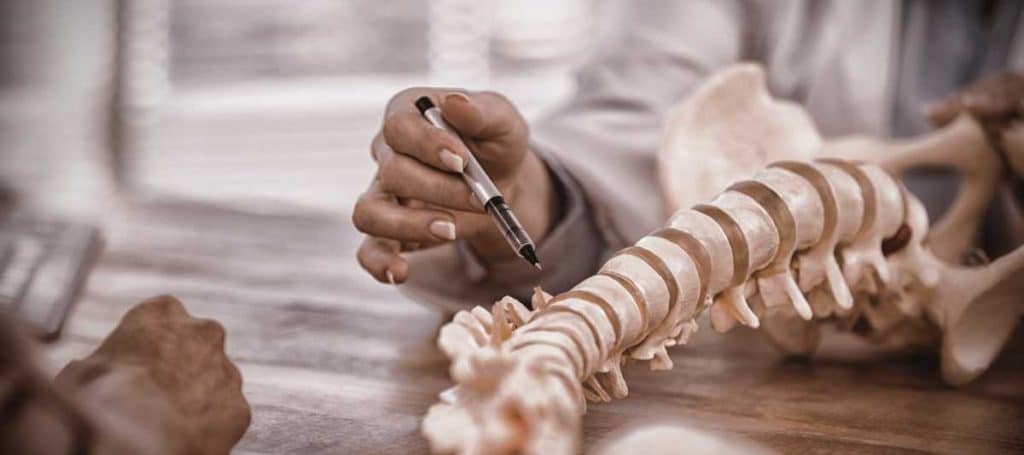Being successful in PT school sure has plenty of perks. Aside from the big picture (that being graduation from your program and obtaining licensure), success throughout your time in school will also carry added benefits of immense stress reduction, a more professional image and perhaps even some fun along the way.
If you want to succeed in PT school, you need to make sure that you avoid the most common pitfalls that PT students fall into. This includes having effective time management skills, knowing more anatomy than the average PT student and respecting the demands of the program from start to finish.
While this may sound like incredibly simplistic advice, many students do not follow through with these necessities, likely due to a lack of understanding as to how powerful they truly are. Once one understands the depths to which these necessities impact academic performance, only then do students usually see them through.
So how do you, the fellow PT student or candidate student see these necessary success factors through in order to crush your program?
If you’re serious about succeeding as a student, read on below for how you can maximize your academic potential and make life way more enjoyable and easier throughout your time in your program:
ARTICLE OVERVIEW (QUICK LINKS)
(Click/tap on any of the following titles to instantly jump to that section of the article.)
Have a clear understanding for why you want to succeed
Make sure you are a master with your time management skills
Study and know more anatomy than your peers
Respect the program to ensure you don’t let your guard down
Final thoughts
Have a clear understanding for why you want to succeed in the first place

If you want to make life hard on yourself, make sure you don’t give yourself a strong understanding as to why you want to succeed at whatever it is you’re committing yourself to. This isn’t just for PT school, but for anything else worth pursuing as well. Not knowing why you want to succeed is a great way to limit your overall potential for success.
In the case of PT school, knowing why you want to succeed will keep you on track throughout your pursuits; it will help you keep your “bite” when things get tough and you want to give in. Knowing why you want to succeed will keep pulling you along when you would otherwise simply let off the throttle, quit and throw in the towel.
It may sound ridiculous, but you need to make sure you know what it is that is spurring you along to make sure that you don’t fall victim to the apathy, fatigue and indifference that can result with the seemingly relentless and ongoing demands that PT school can impose upon its students.
Whatever your reason(s) may be for wanting to succeed, keep a clear vision of them; write them down somewhere if need be so that you can read them over and over again as a means to breathe life back into you when otherwise questing why you became a PT student in the first place.
Make sure you are a master with your time management skills

This is, in fact, the most universally agreed upon success factor when asking practicing physical therapists what they feel is the biggest predictor of PT student success. Yes, being academically gifted certainly helps, however even the brightest students will likely find themselves being stretched rather thin on time throughout many different points in their program.
And if you don’t consider yourself to be an academic all-star, then you’ll especially want to make sure that you know how to plan and budget your time accordingly.
Related article: Students: Here’s How to Dominate Studying at Home for Major Success
This is not to say that PT school is impossible, nor that you will likely feel overwhelmed throughout the entirety of the program, rather that there’s a LOT of material to cover within three-years time and so things will move very quick. If you can’t keep the pace, you’ll likely find yourself in academic jeopardy. Not to mention, you’ll still have to deal with life factors pertaining to outside of your academic program as well.
The best way to make sure you keep pace while solidifying the material and its concepts within your head are to devote ample and specific amounts of time to your assignments, course material and all other endeavors pertaining to the academic pursuit.
The execution of this may look different from one student to the next, so you will need to find what works best for YOU. Regardless of the specifics, it would behoove you to make sure the sole foundation of it all is built upon dedicated study time that is set aside from the rest of the day in order for this to occur.
Some students can essentially “wing it” and study in rather informal and infrequent manners, but if you have any doubt as to your time management skills or your overall academic potential, get a structured study regimen going by blocking out specific times each day or throughout the week to devote to your studies.
Related Article: How to Do Well in PT School: Five Principles PT Students Must Follow
Study and know more anatomy than your peers

I would truly argue that there is a direct correlation between how much anatomy one knows and how well they fare throughout the duration of PT school. I don’t have any hard, scientific evidence to back that up, but I do have plenty of anecdotal evidence between what I personally witnessed while in PT school along with what hundreds of other students have told me in regards to their own experiences as well.
Of course, you need to know your anatomy for courses such as gross anatomy, functional anatomy and neuroanatomy, but it doesn’t stop there. While those courses will test you directly on your anatomical knowledge, the vast majority of other courses will test you indirectly on your anatomical knowledge.
As a quick example:
Your orthopedic courses will assume that you know your anatomy well enough to decipher anatomical structures that could be affected with certain injuries or conditions. So, while your test and exams won’t directly ask anatomy questions, the only way you’ll be able to answer questions they ask and problem solve issues they present you with is by relying on your anatomical knowledge to clinically reason as to what structures or anatomical features have been affected.
Related Article: Six Study Tips for PT Students That Work for ANY Course
Then there’s the added benefit of having supreme confidence as you carry your way through your courses and the program itself. Anatomical knowledge is the absolute backbone to not only delivering effective treatment when in the clinic, but also to having confidence in what you’re doing, either as a clinician or as a student.
Having exceptional anatomical knowledge throughout PT school is like having exceptional self-defence skills in life: knowing you can safely and effectively defend yourself when walking down the street at night or in a sketchy bar makes life a lot less nerve-wracking and much more enjoyable than always living in fear of being attacked, not knowing how to defend yourself.
Much the same, knowing that you have some serious anatomy skills to rely on will allow you to defend yourself against multiple “attacks” that can arise from various courses and its subsequent material, keeping you safe at all times.
The pursuit of your anatomy knowledge will need to be one that is always ongoing, even after your direct anatomical-based courses. This doesn’t mean that you need to devote hours to studying anatomy each night, but taking some time here or there to brush over the major anatomical features of the body while simultaneously learning a few new things here and there is indeed a smart move to make.
Think of it like developing your physical fitness: if you don’t use it, you lose it. Just because you’ve acquired something once (be it physical fitness or anatomical knowledge) doesn’t mean that you get to keep it forever if you don’t continually practice it on a regular basis.
Just make sure to find ways to make the study and learning process fun and enjoyable. Even just doing little frequent bouts of it here and there will add up rather quickly.
Respect the program to ensure you don’t let your guard down

No matter who you are, or what kind of student you may be, one of the biggest mistakes you could ever make while in PT school is to not respect the program. By this, I simply mean that you fail to remember that your academic situation can change pretty drastically if you get a little to nonchalant or lackadaisical with your studies.
Related Article: PT School: How to Know if You Should Work A Job While in School
All it takes is to put things off long enough that you perhaps get a little behind on learning or studying material before you find yourself not only struggling to stay caught up, but to effectively learn the material as well. This often leads to high levels of stress that could have otherwise been prevented.
It’s a lot easier to stay caught up than to try and get caught up. Things move quickly in PT school and letting your guard down even briefly could the the one proverbial “lucky punch” that the opponent lands in a boing match that ultimately change the course of the fight, or in this case, the course of your academic success.
This isn’t to say that PT school is the most difficult program in the world, far from it (in my humble opinion, of course). But if you don’t acknowledge (AKA respect) the fact that all it takes to start a downward slide in PT school is one poor midterm exam or a lack of understanding of one key concept, even bright students can find themselves struggling to stay afloat.
Final thoughts
Success is defined in a lot of different ways, and ultimately comes down to what you’re after. Nonetheless, assuming that your definition of “success” when it comes to physical therapy school is anywhere near along the lines of graduating your program and avoiding common mistakes that students make, you’ll want to avoid the three big mistakes outlined in this article.
PT school will keep you busy, but it should also be at least somewhat fun, if not really fun. And when it comes to this, there tends to be a direct correlation between how successful students are and how much fun they’re having. So do yourself a favor: outline what success looks like to you as a PT student and ask yourself how the three tips within this article can help ensure that you are as successful as you want to be.
Grind hard. You’ve got this.
-Jim

Hi! I’m Jim Wittstrom, PT, DPT, CSCS, Pn1.
I am a physical therapist who is passionate about all things pertaining to strength & conditioning, human movement, injury prevention and rehabilitation. I created StrengthResurgence.com in order to help others become stronger and healthier. I also love helping aspiring students and therapists fulfill their dreams of becoming successful in school and within their clinical PT practice. Thanks for checking out my site!

